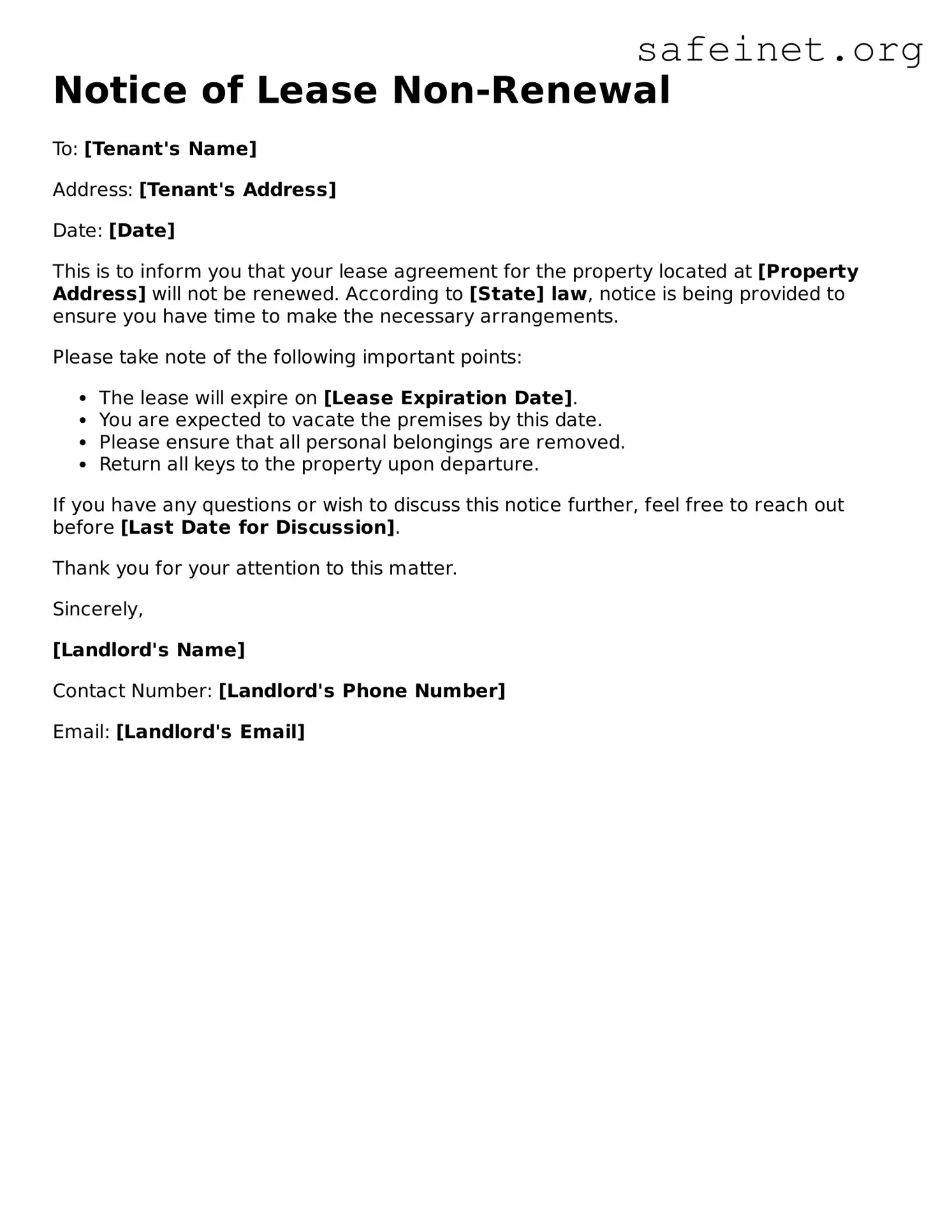Official Notice of Lease Non-Renewal Document
The Notice of Lease Non-Renewal form is a legal document utilized by landlords to inform tenants that their lease will not be extended beyond its current term. This form serves as a critical communication tool, allowing both parties to prepare for the end of the tenancy. Understanding the purpose and requirements of this form is essential for smooth lease transitions.
For further assistance with the process, fill out the form by clicking the button below.
